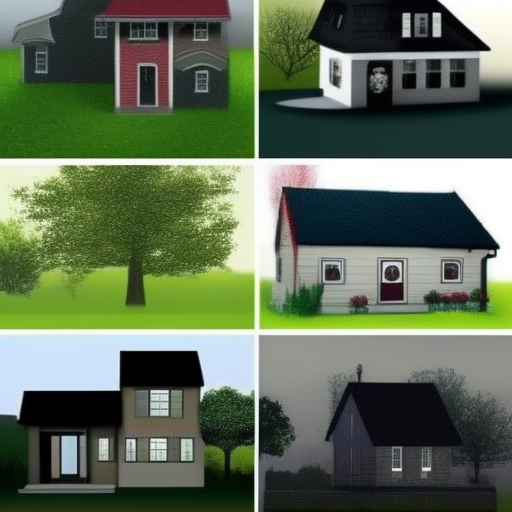When it comes to decorating smaller spaces, color plays a major role in the way the room appears. Many people have the misconception that dark colors cause a room to appear smaller, but does this really hold true for all areas of the house? In this article, we will explore the effects of using dark colors to decorate a small house, and if it really does make it feel and look even smaller.
1. Benefits of Dark Colors in Small Homes
The
Contrary to popular belief, using dark colors in a small house does not necessarily make it look smaller. In fact, there are several benefits to using darker shades in decorating a small space that many people often overlook.
- Creates Depth and Drama: Dark colors can create depth and drama in a small space, giving it a dramatic and elegant look.
- Hides Imperfections: Dark colors can hide imperfections in the walls or ceilings, making them less noticeable.
- Highlights Unique Features: Dark colors can also highlight unique features of a small space, such as built-in shelves or an exposed brick wall.
For example, if you have a small living room with a fireplace, painting the wall behind the fireplace a dark color such as navy blue or charcoal grey can instantly draw the eye to the feature, making it the focal point of the room. Similarly, in a small bedroom, painting the wall behind the bed a dark color can create a cozy and intimate atmosphere.
Keep in mind that using dark colors in a small space requires careful consideration of lighting and furniture. Adding proper lighting and incorporating light-colored furniture can help balance out the darkness and prevent the space from feeling too heavy or claustrophobic. So don’t be afraid to experiment with dark colors in your small home, and see how they can transform your space into a cozy and stylish retreat!
2. Problems of Using Dark Colors in Small Homes
As much as dark colors add depth and sophistication to a room, they also have some notable drawbacks when used in small homes. One major problem is that they tend to absorb light and create a dull, cramped atmosphere that can make your small space feel even smaller. This is because they have a high Light Reflectance Value (LRV) compared to light colors like white, which reflects more light and makes a room appear more spacious.
Another problem is that dark colors can be challenging to match with other palettes, especially when you’re trying to create a balance of tone and texture. The result? A room that’s either too busy, too stark, or just plain boring. For example, painting your walls black and then pairing them with a black couch, a black rug, and a black coffee table will not only make your space feel claustrophobic but also feel like the interior of a funeral parlor.
So, before deciding to go all-in with dark colors in your small home, think twice about the amount of natural light and how it will complement your furniture and decor. Bold colors can be an excellent addition to any home, but keep in mind that less is sometimes more. Use pops of colors as accents, rather than painting an entire room with a deep shade. Remember, a little bit of color can go a long way when used properly.
3. Tips for Utilizing Dark Colors in Small Homes
When it comes to small homes, many people shy away from using dark colors in their interior design as they believe it will make their space look even smaller. However, by utilizing the right techniques and adding a touch of creativity, you can make dark colors work wonders in your small home.
Firstly, try implementing dark colors on accent walls or specific features, such as built-in shelves or cabinetry. This allows your space to have depth and definition without overwhelming the entire room. Another tip is to use contrasting colors for accents and furniture to create a bold and striking atmosphere. For example, pairing a dark navy blue wall with crisp white shelving and a light cream sofa can make for a stunning combination.
Furthermore, don’t be afraid to mix textures and patterns to add variation to the room. Combining a velvet navy blue accent chair with a faux fur rug in a similar hue can give your small space a touch of luxury and character. Remember, the key is to balance the dark colors with light elements, such as natural light, mirrors, or light fixtures. By doing so, you can create a cohesive and inviting space that feels far from cramped or claustrophobic. So, don’t be afraid of the dark, embrace it – the possibilities are endless! Dark colors have the potential to create a certain atmosphere in the home and make a small house seem cozier and more intimate. Although, one must be careful when using dark colors as overdoing it may make a small house seem even smaller. To decide what colors to use for your house and create the atmosphere you want, it is recommended to experiment and consult with a professional to guarantee the best result.